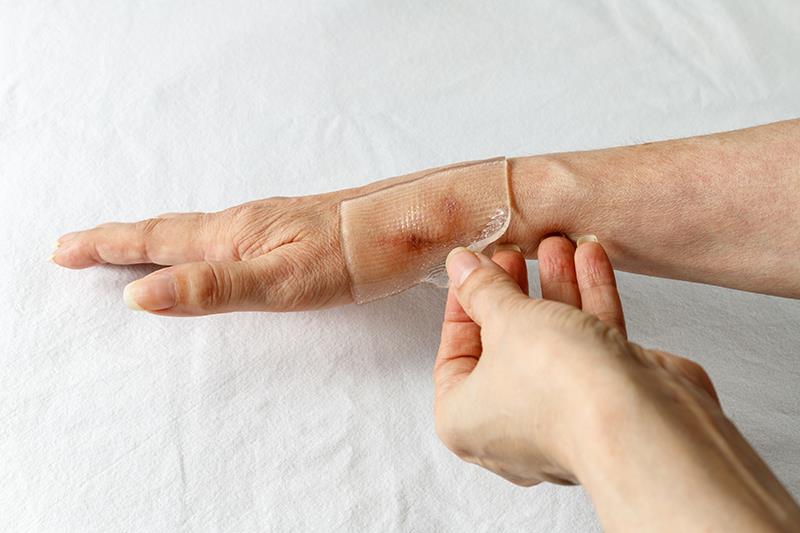Some patients hesitant to perform self-wound care





Some patients are reluctant to manage their own wounds, and this hesitation appears to be influenced by factors such as family support, among others, according to a study from Singapore.
In a survey conducted among 328 adults (40 percent 51–70 years of age, 66 percent male, 65 percent Chinese) in the polyclinics, 45 percent of respondents expressed hesitation toward performing self-wound care. Strong family support was a significant determinant, such that respondents who lacked family support were less fearful of wound infection or contamination when performing self-wound care (p=0.015), suggesting that they may have developed greater self-reliance and hygiene practices due to their circumstances. [J Patient Exp 2024;11:23743735241297491]
On the other hand, respondents with good family support were more confident in their families’ willingness to assist with wound dressing procedures compared with those who had poor family support (p<0.001).
Forty-four percent of participants expressed hesitation in requesting assistance with dressing procedures from family, friends, or caregivers. Conversely, individuals with robust family support demonstrated a greater inclination to seek help from family members for dressing procedures (p=0.020). Older respondents (p=0.026) and those with secondary education (p=0.002) were less likely to ask family or friends for help, possibly due to concerns about inconvenience.
Female respondents were significantly more confident that their family members, friends, or caregivers would be willing to assist with self-wound care procedures compared with their male counterparts (p=0.036). Younger respondents were also more likely to perceive their family members as willing to provide assistance compared with older respondents (p=0.002). Furthermore, respondents who were either students or serving national service were significantly more likely to report that their family members and friends were willing to assist with dressing procedures relative to other occupational groups (p=0.008).
Common wound types encountered in Singapore’s primary healthcare include diabetic foot ulcers, chronic leg ulcers, pressure injuries, skin tears, and acute wounds such as lacerations and abrasions, the investigators noted.
In local healthcare context, shared wound care—characterized by having patients, family members, physicians, and nurses jointly participate in the management and treatment of wounds—has shown promise in promoting healing for various wounds. Nevertheless, this care model still requires active patient involvement in their wound care routine, encompassing tasks like cleaning, dressing changes, medication application, and wound monitoring. [Int Wound J 2017;14:1269-1275]
The findings highlight the need for interventions fostering open communication within families and reducing caregiver burden, the investigators said. “Educational programs and workshops addressing proper technique, self-wound care practices, and complication signs are crucial to alleviate patient anxieties.
“Furthermore, exploring assistance for wound care supplies and broader medical cost reduction for self-wound care are necessary to overcome logistical barriers to increase the take-up rates for self-wound care,” they added.